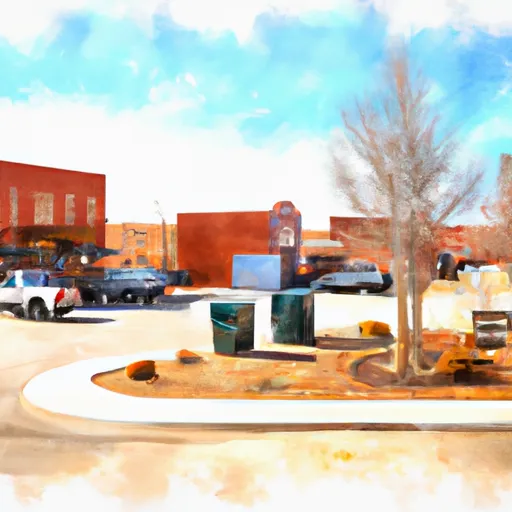-
 Snoflo Premium
Snoflo Premium
Get unlimited access to all our content
With no Ad interruptions! - Start Your Free Trial Login with existing account
Manassa
Eden Index
Climate
6.6
•
Recreation
4.5
•
Community
0.6
•
Safeguard
4.4/10

Manassa, Colorado is a small town located in Conejos County. This picturesque town is situated in the San Luis Valley, surrounded by stunning mountain ranges and vast open plains. Manassa experiences a semi-arid climate, characterized by mild winters and warm summers. Average temperatures range from the mid-20s °F in winter to the mid-80s °F in summer. The area receives around 10 inches of precipitation annually, mostly in the form of snow during winter months.
Hydrology constituents in Manassa primarily revolve around the Rio Grande River, which flows nearby. This river serves as a vital water source for the community and supports various recreational activities such as fishing, boating, and kayaking. Additionally, the surrounding area boasts several natural hot springs, providing opportunities for relaxation and rejuvenation.
Outdoor enthusiasts will find plenty of recreational opportunities in Manassa. The town is a gateway to the beautiful San Juan Mountains, offering incredible hiking, mountain biking, and camping opportunities. The nearby Great Sand Dunes National Park is a popular destination for sandboarding, picnicking, and stargazing. With its stunning natural beauty and diverse outdoor activities, Manassa is a hidden gem for those seeking an adventurous experience in Colorado's scenic landscapes.
What is the Eden Index?
The Snoflo Eden Index serves as a comprehensive rating system for regions, evaluating their desirability through a holistic assessment of climate health, outdoor recreation opportunities, and natural disaster risk, acknowledging the profound impact of these factors on livability and well-being.
Climate Health Indicator (CHI): 6.6
Manassa receives approximately
209mm of rain per year,
with humidity levels near 69%
and air temperatures averaging around
6°C.
Manassa has a plant hardyness factor of
5, meaning
plants and agriculture in this region thrive during a short period during spring and early summer. Most
plants will die off during the colder winter months.
By considering the ideal temperature range, reliable water supplies, clean air, and stable seasonal rain or snowpacks, the Climate Health Indicator (CHI) underscores the significance of a healthy climate as the foundation for quality living.
A healthy climate is paramount for ensuring a high quality of life and livability in a region, fostering both physical well-being and environmental harmony. This can be characterized by ideal temperatures, reliable access to water supplies, clean air, and consistent seasonal rain or snowpacks.
Weather Forecast
Streamflow Conditions
Rio Grande Headwaters
Area Rivers
Rio Grande Headwaters
Snowpack Depths
Rio Grande Headwaters
Reservoir Storage Capacity
Rio Grande Headwaters
Groundwater Levels
Recreational Opportunity Index (ROI): 4.5
The Recreational Opportunity Index (ROI) recognizes the value of outdoor recreational options, such as parks, hiking trails, camping sites, and fishing spots, while acknowledging that climate plays a pivotal role in ensuring the comfort and consistency of these experiences.
Access to outdoor recreational opportunities, encompassing activities such as parks, hiking, camping, and fishing, is crucial for overall well-being, and the climate plays a pivotal role in enabling and enhancing these experiences, ensuring that individuals can engage in nature-based activities comfortably and consistently.
Camping Areas
| Campground | Campsites | Reservations | Toilets | Showers | Elevation |
|---|---|---|---|---|---|
| Cebolla Mesa | 5 | 7,372 ft | |||
| Laguna Larga | 7 | 9,008 ft | |||
| San Luis State Park | 51 | 7,511 ft | |||
| La Junta - Wild Rivers Rec Area | None | 7,465 ft |
Nearby Ski Areas
Catastrophe Safeguard Index (CSI):
The Catastrophe Safeguard Index (CSI) recognizes that natural disaster risk, encompassing floods, fires, hurricanes, and tornadoes, can drastically affect safety and the overall appeal of an area.
The level of natural disaster risk in a region significantly affects safety and the overall livability, with climate change amplifying these risks by potentially increasing the frequency and intensity of events like floods, fires, hurricanes, and tornadoes, thereby posing substantial challenges to community resilience and well-being.
Community Resilience Indicator (CRI): 0.6
The Community Resilience Indicator (CRI) recognizes that education, healthcare, and socioeconomics are crucial to the well-being of a region. The CRI acknowledges the profound impact of these elements on residents' overall quality of life. By evaluating educational resources, healthcare accessibility, and economic inclusivity, the index captures the essential aspects that contribute to a thriving community, fostering resident satisfaction, equity, and social cohesion.

